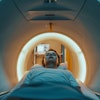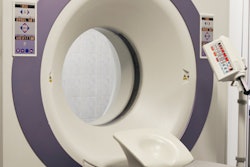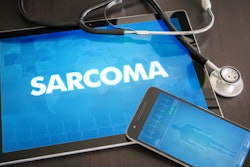A combined deep-learning and radiomics model helps clinicians differentiate complicated from uncomplicated acute appendicitis (AA) on pelvic CT, researchers have found.
The study findings could help clinicians better determine if patients with appendicitis can be managed without surgery, wrote a team led by Dan Liang, PhD, of the First Affiliated Hospital of Jinan University, Guangzhou, Guangdong, China. The study findings were published September 27 in Academic Radiology.
"Appendectomy is one of the most frequently performed operations worldwide," the group noted. "However, it is associated with short- and long-term complications and represents an important burden on modern global public health care systems … [Now] nonoperative management of AA has [begun to be considered]."
Acute appendicitis is one of the most common causes of acute abdominal pain, the group noted. But whether surgery is actually indicated in each case of appendicitis has come under debate.
In the past three decades, several randomized controlled trials have argued that complicated AA (gangrenous or perforated) and uncomplicated AA are two discrete entities with differing pathophysiology performance, and the use of antibiotic agents as an initial treatment strategy for the latter has been shown to be a safe option," the researchers explained. "Thus, it is of paramount importance to make an accurate diagnosis and assessment in AA patients to select the most appropriate treatment option."
Liang and colleagues conducted a study that included 1,1765 adult acute appendicitis patients; of these, 700 were included in a training cohort for the deep-learning algorithm (which the team developed using CatBoost) and 465 in a validation cohort. The model incorporated clinical characteristics and CT visual, deep learning, and radiomics features. The study compared the model's performance to radiologists' CT exam interpretations using the area under the receiver operating characteristic curve (AUROC) measure (with 1 as reference); surgery and pathology records were used as reference standard for determining whether the acute appendicitis was complicated or uncomplicated. The group also assessed accuracy, sensitivity, specificity, positive predictive value (PPV), and negative predictive value (NPV).
The combined deep learning/radiomics model showed a higher AUROC than that of radiologist readers and demonstrated higher sensitivity and NPV.
| Validation set data comparing combined deep-learning/radiomics model to radiologist readings for distinguishing complicated from uncomplicated acute appendicitis | ||
|---|---|---|
| Measure | Radiologists' diagnosis | Combined deep-learning/radiomics model |
| AUC (with 1 as reference) | 0.68 | 0.79 |
| Accuracy | 73% | 72% |
| Sensitivity | 45% | 70% |
| Specificity | 90% | 74% |
| PPV | 75% | 63% |
| NPV | 73% | 80% |
"[Our] combined model allows the accurate discrimination of complicated from uncomplicated AA and offers notable advantages over … radiologists' visual diagnosis, which may help
to improve the process of patient selection for nonoperative management," the group concluded.
The complete study can be found here.



















